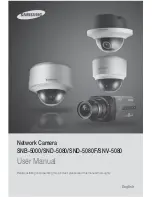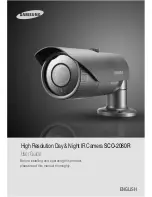
Advanced parameters and commands
Goldeye Technical Manual
V2.2.0
67
on page 61) actually being activated. After the non-volatile storage (
X=1
) and
a re-start of the camera all file numbers following
A
and
B
are loaded into
the correction data memory as mentioned above. For an optimum image quality
one should take into consideration that the parameters
A
and
B
shall always
specify
a pair of two mating reference images
, even though these parameters are
alterable separately.
Example
Loading of correction data at low reference temperature into the active correc-
tion memory page of file number 0x20.
>
A=20[CR]
The set values for both reference images
A
and
B
are adjusted with the
parameters
J
and
K
. For each correction data set two registers are available
which include the corresponding set value. One always refers to both set values
of the actual correction data set
S
.
In case that various correction sets are selectable, the set values are factory-
bunched in one file, the number of which is indicated by the parameter
N
. If
N
is not zero, the values for all correction sets from this file are loaded, when
switching-on the camera and stored back with
X=1
.
In case that only one correction data set is on hand,
N
can remain on the value
zero, because
J
and
K
(only the values of the actual memory page) are stored
together with all other parameters of one system file apart from the file N.
Example
All set values of the two-point correction have to be loaded from the file 0x60.
>
N=60[CR]
Generally no changes at the set values have to be executed.
From the registers
J
and
K
actually only the higher 12 bits are used.
The lower 4 bits are reserved for prospective extensions and should always be
set to zero:
Example
Note
For more information on command X=1 see Chapter
Bit position
15
14
13
12
11
10
9
8
7
6
5
4
3
2
1
0
Value (12-bit)
2
11
2
10
2
9
2
8
2
7
2
6
2
5
2
4
2
3
2
2
2
1
2
0
-
-
-
-
x
0
Table 32: J and K: bit usage
















































